The Impact of ABA Therapy on Reducing Challenging Behaviors
Exploring ABA Therapy: Efficacy and Insights into Behavioral Transformation
Understanding the Role of ABA in Behavioral Improvements
Applied Behavior Analysis (ABA) therapy stands as a cornerstone in the field of interventions for autism spectrum disorder, renowned for its structured approach to modifying behaviors and improving social and emotional skills. This article delves into the efficacy of ABA in reducing challenging behaviors, the methodologies involved, and its comparative strengths and limitations against other therapeutic strategies.
Defining ABA Therapy
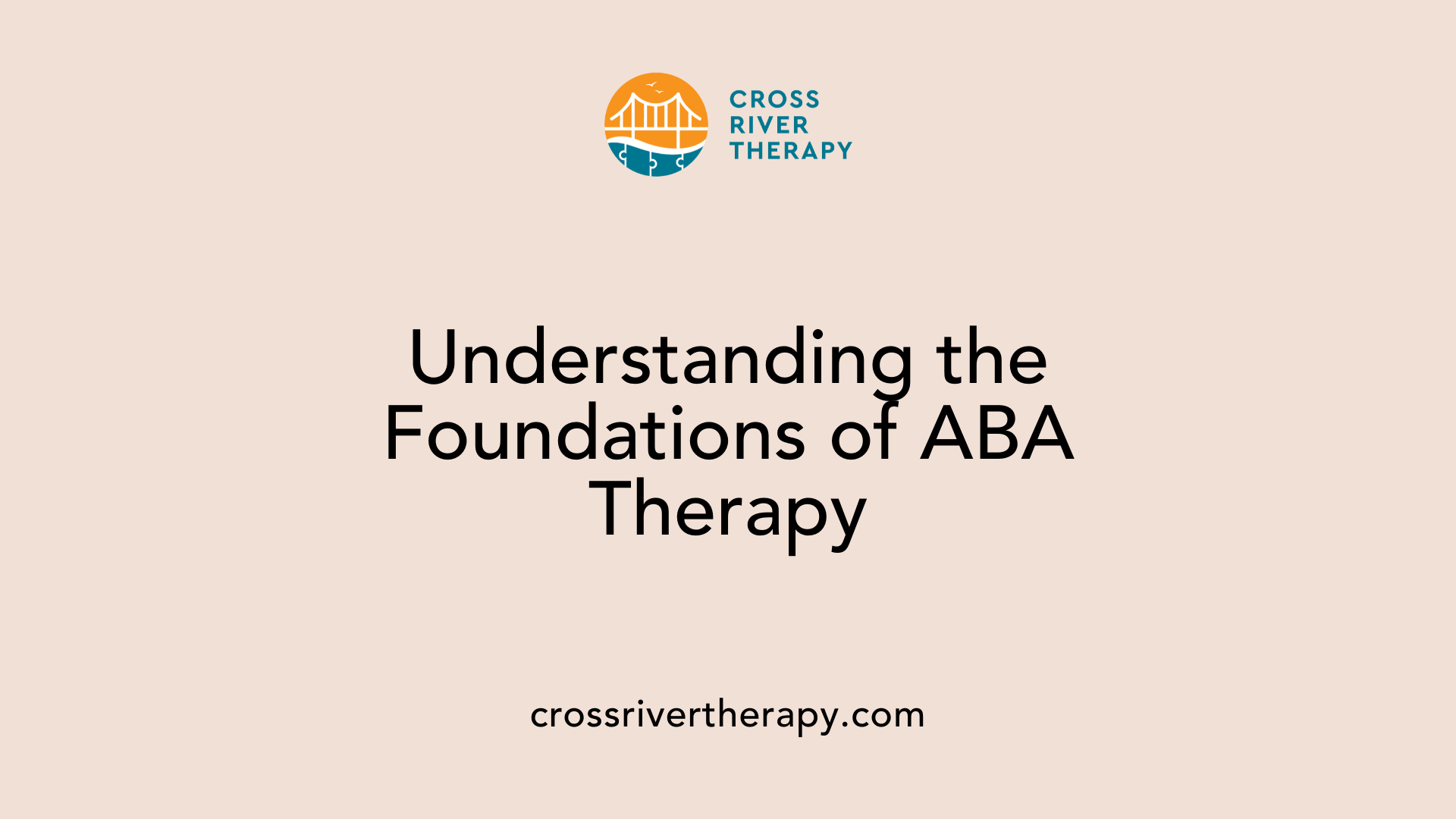
What is Applied Behavior Analysis (ABA) therapy and how is it defined?
Applied Behavior Analysis (ABA) therapy is grounded in learning and behavioral theories. It seeks to understand and modify behaviors in response to environmental stimuli. The primary goal of ABA is to increase positive behaviors and decrease undesirable ones, facilitating enhancements in communication, social interactions, and academic skills.
ABA employs various techniques, including:
- Positive Reinforcement: Encouraging desired behaviors by rewarding them.
- Task Analysis: Breaking down complex tasks into manageable steps for easier learning.
- A-B-C Model: This framework looks at the Antecedent (what happens before), Behavior (the action taken), and Consequence (the result of the behavior) to systematically analyze and modify behavior.
Overview of methodologies and principles
The approaches within ABA are tailored to the unique needs of each individual. It is highly individualized and systematic, involving several principles that guide its practice. Key principles include:
- Reinforcement: Encouraging the repetition of desired behaviors.
- Behavior Modification: Utilizing data-driven techniques to track and adjust interventions effectively.
- Shaping and Stimulus Control: Gradually reinforcing closer approximations to desired behaviors while managing stimuli that may trigger maladaptive behaviors.
ABA is not only applicable to children with autism but has proven impactful for other populations experiencing behavioral issues. Its structured nature, combined with a compassionate approach, makes it a widely accepted and effective method in therapeutic settings.
Techniques Used in ABA Therapy
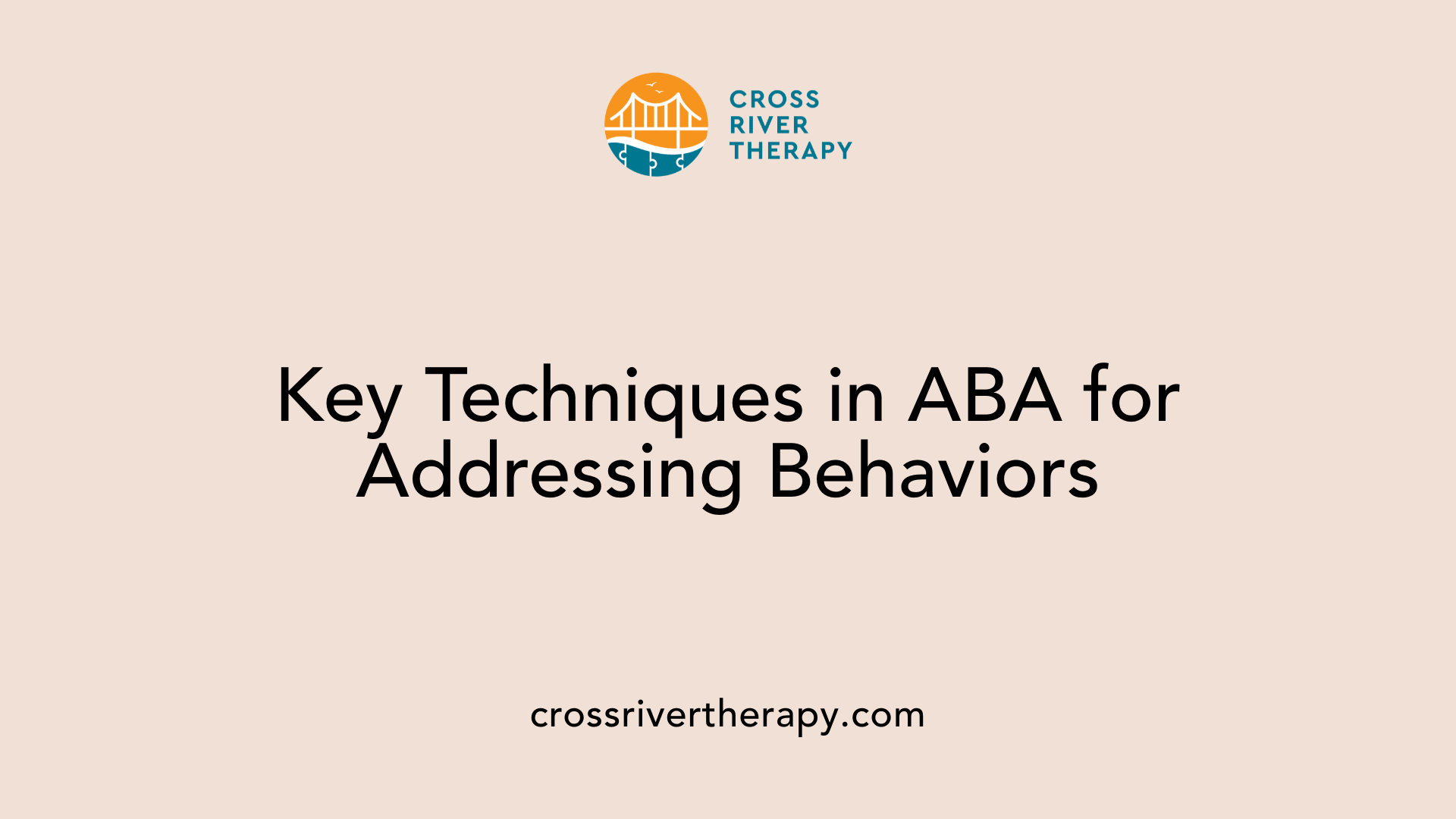
What are the primary techniques used in ABA therapy to address challenging behaviors?
Applied Behavior Analysis (ABA) therapy utilizes several strategies to effectively address challenging behaviors and foster desired behaviors. Understanding these techniques can clarify how ABA positively impacts the social and emotional skills of autistic children.
1. Positive Reinforcement:
This involves rewarding desired behaviors to increase their occurrence. When a child demonstrates a positive behavior, they receive a reward, which reinforces that behavior.
2. Negative Reinforcement:
This technique promotes desired behaviors by removing unpleasant stimuli when the behavior is performed. For example, if a child completes a task, they might avoid an undesired chore.
3. Prompting:
Prompting provides cues or hints to guide children toward appropriate behaviors. This can be verbal, gestural, or visual, helping children understand what is expected.
4. Modeling:
Modeling consists of demonstrating a behavior for a child to imitate. This technique helps in teaching social skills and communication through real-life examples.
5. Task Analysis:
This approach breaks down complex tasks into smaller, manageable steps. By teaching one step at a time, children can learn effectively without feeling overwhelmed.
6. Functional Behavior Assessment (FBA):
FBA identifies the underlying reasons for challenging behaviors. Understanding the causes allows therapists to apply targeted interventions addressing those specific behaviors.
Individualized therapy approaches
ABA emphasizes individualized therapy tailored to each child's unique needs. Each child’s program is crafted based on thorough assessments, ensuring that therapy addresses specific behavioral issues while harnessing their strengths.
In summary, the integration of these techniques within a structured and individualized framework positions ABA therapy as a powerful tool for promoting significant behavioral changes and aiding developmental growth in children with autism.
Enhancing Social Skills through ABA
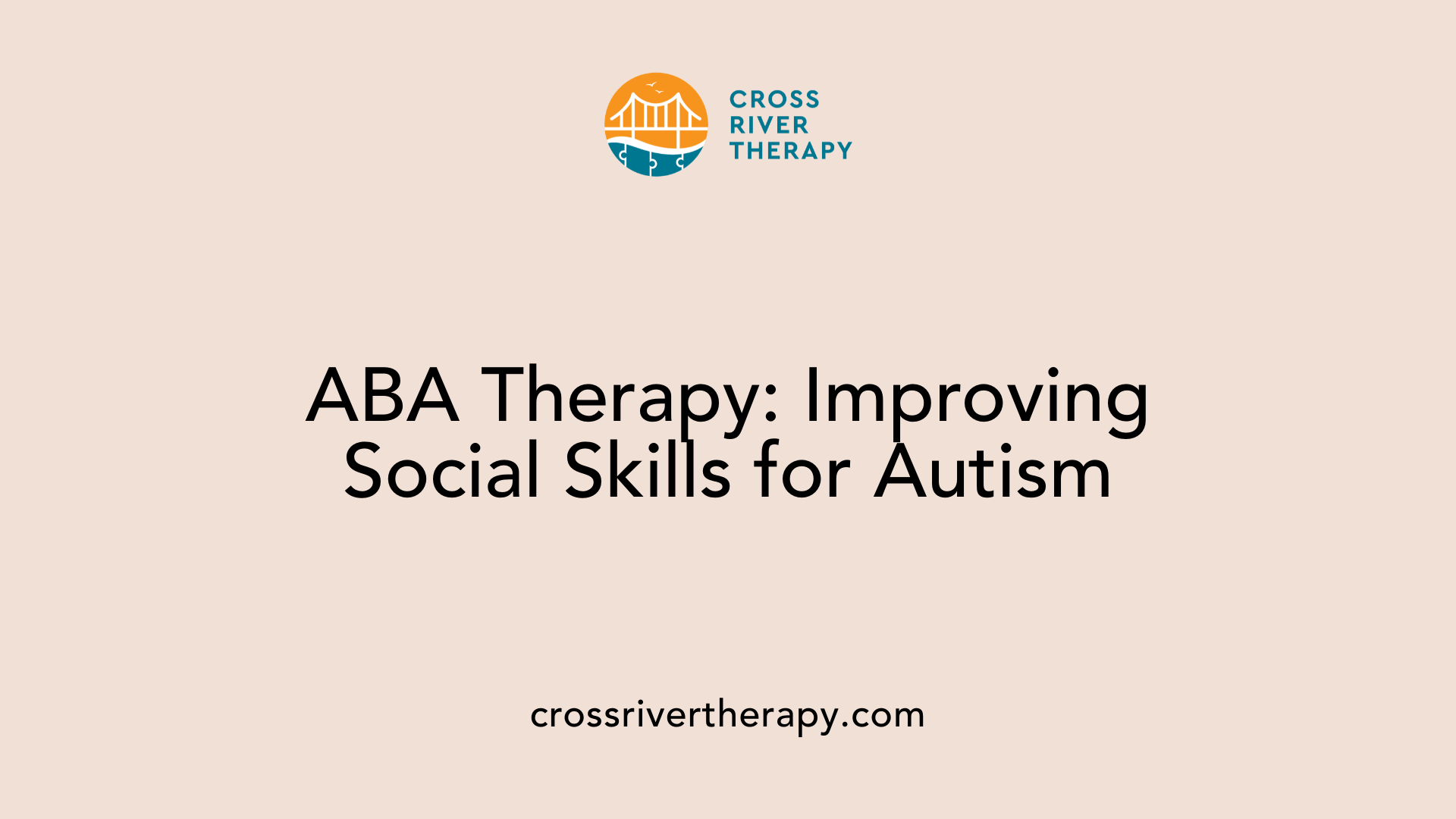
How is ABA therapy beneficial in improving social skills for individuals with autism?
ABA therapy is instrumental in improving social skills for autistic individuals by simplifying complex interactions into manageable components. This method employs structured practice and reinforcement to enhance attention, memory, and focus, all crucial for engaging socially.
In personalized programs, specific skills like starting conversations and reading social cues can be targeted for improvement. Techniques employed in therapy include:
- Modeling: Demonstrating appropriate social behaviors for the child to observe.
- Role-playing: Allowing children to enact different social scenarios, enabling them to practice responses.
- Structured play activities: Creating controlled settings where children can interact with peers, enhancing their social engagement skills.
Through these strategies, ABA therapy not only fosters better communication but also boosts self-confidence in social situations. As children develop these essential skills, they can build more meaningful relationships, contributing positively to their overall social integration and emotional well-being.
| ABA Strategies | Description | Expected Outcomes |
|---|---|---|
| Modeling | Demonstrating appropriate social behaviors | Improved observation and learning |
| Role-playing | Enacting social scenarios | Enhanced response capabilities |
| Structured Play Activities | Creating controlled interactions with peers | Increased engagement and communication skills |
Ultimately, ABA therapy has a profound impact on a child's ability to navigate social settings, making significant strides in their social skills development.
Criticisms and Limitations of ABA
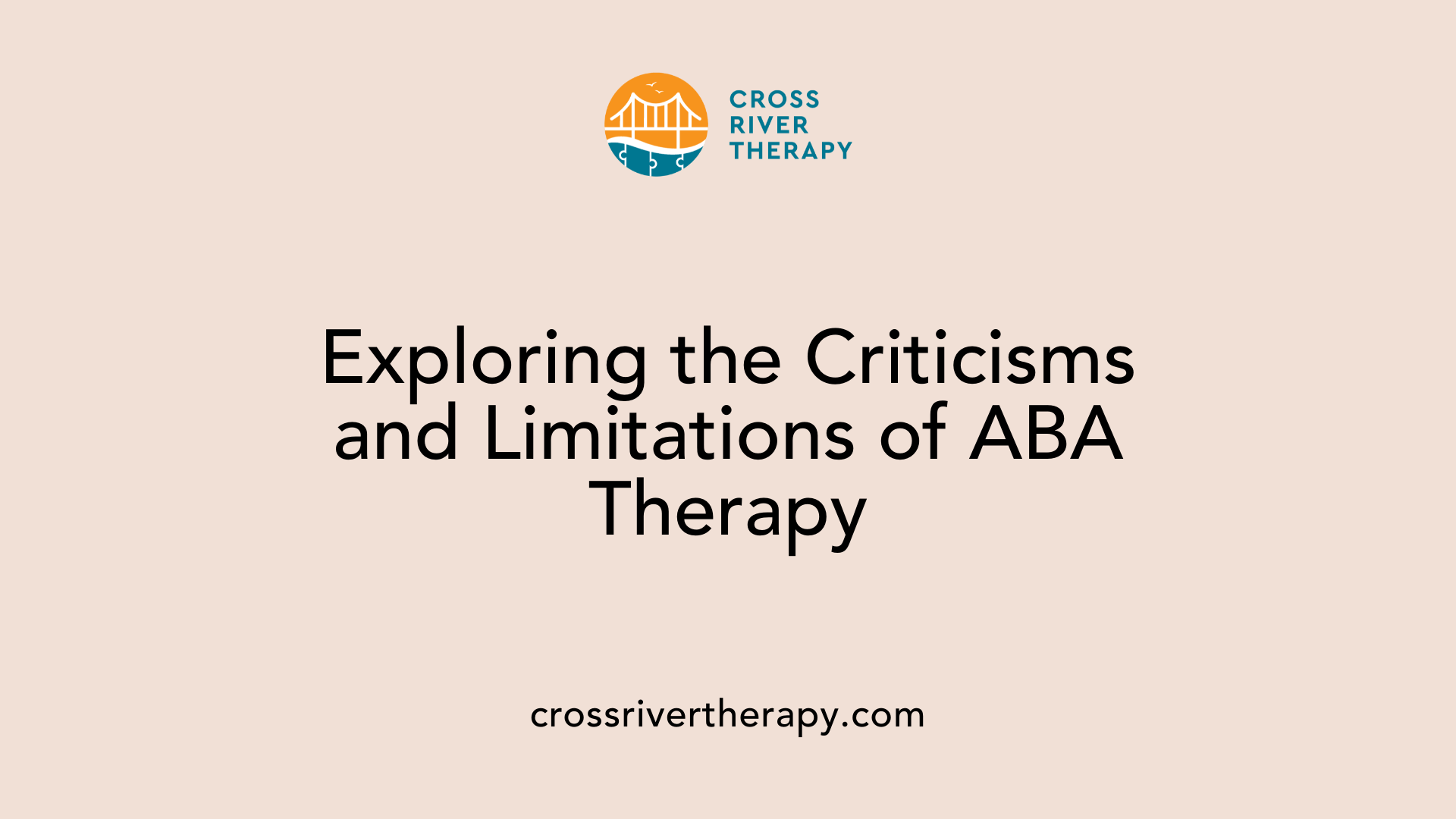
What are some limitations and criticisms of ABA therapy?
ABA therapy has faced significant criticism and limitations, particularly regarding its historical practices and rigid methodologies. Some critics point out that older versions of ABA employed aversive techniques, which raised concerns about the potential for harm, especially for nonverbal children. Modern approaches have shifted away from these punitive methods, but skepticism remains about the therapy's intensity and conditions.
A common concern is the perception that ABA aims to eliminate natural behaviors that many autistic individuals rely on for emotional regulation, such as stimming. By focusing on modifying behaviors, there is a risk that individuality and natural expression may be suppressed, which some argue could contribute to long-term mental health issues.
Furthermore, evidence suggests that the effects of long-term ABA therapy may not always yield beneficial outcomes and could occasionally lead to negative effects. This has prompted advocates for more flexible and developmentally appropriate approaches.
Impact and implications of criticisms
Critics argue that the emphasis on behavior change may not adequately consider the diverse needs of autistic individuals. Many autistic self-advocates voice concerns that ABA attempts to mold children to fit neurotypical standards, suggesting that a more inclusive perspective is necessary.
As the discourse surrounding ABA therapy continues to evolve, there is a growing call for balanced methodologies that focus both on developing skills and respecting the unique traits of autistic individuals. This shift emphasizes the importance of a compassionate, trauma-informed approach, which might be more effective and acceptable for caregivers and stakeholders.
Research Insights on ABA's Effectiveness
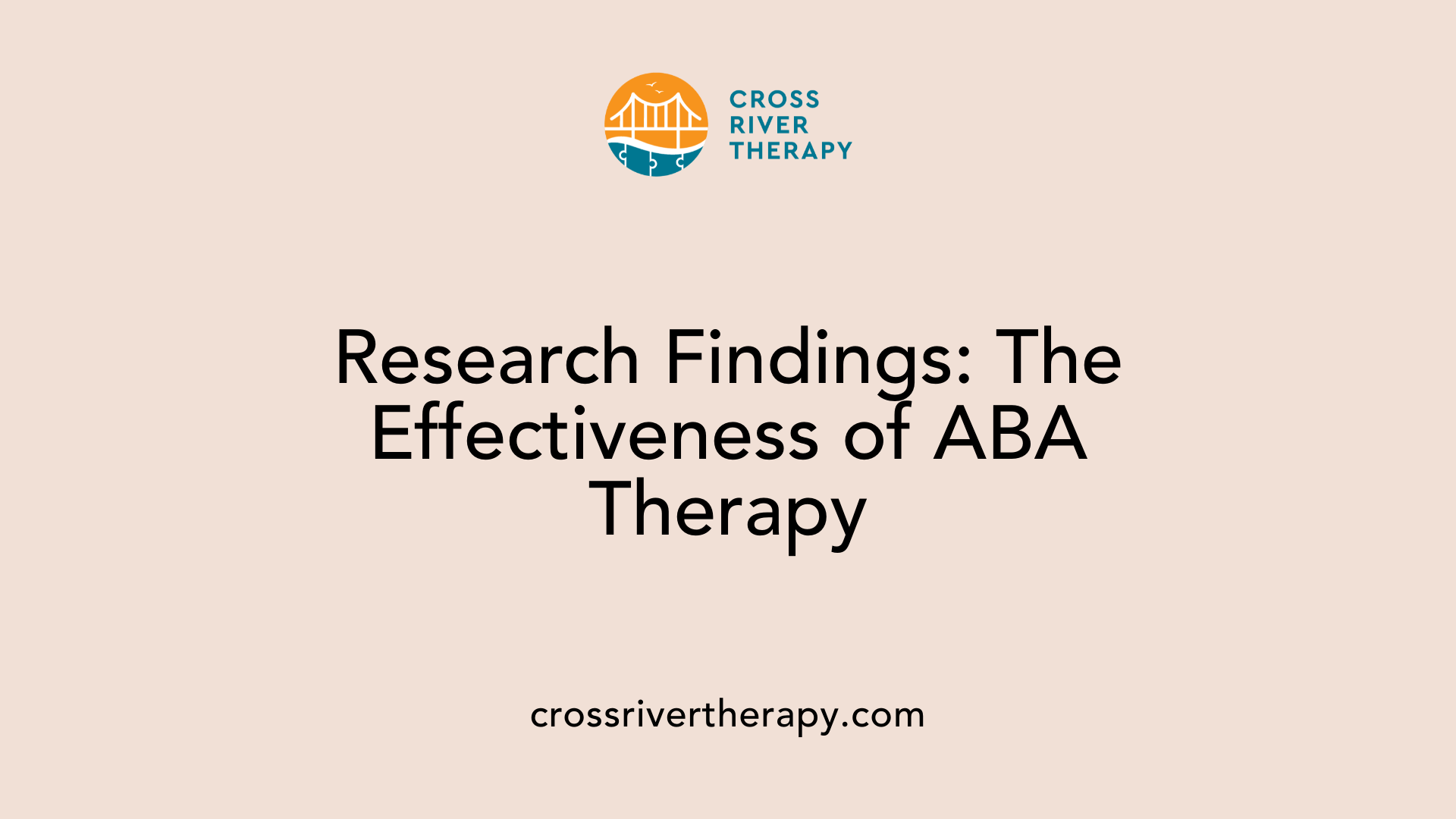
What does research say about the effectiveness of ABA therapy in managing emotional and behavioral challenges in autism?
Research shows that Applied Behavior Analysis (ABA) therapy is effective in managing emotional and behavioral challenges among individuals with autism spectrum disorder (ASD). Numerous studies highlight substantial improvements in key areas such as communication and social skills. In particular, children who partake in structured ABA interventions demonstrate enhancements in these areas, significantly contributing to their emotional regulation and social integration.
A study comparing institutionalized children with autism who received ABA therapy to a control group indicated statistically significant advancements in social communicative skills and overall daily living activities (p < 0.05). The therapy's effectiveness is derived from techniques including positive reinforcement and data-driven approaches that cater to individual needs, making it a personalized treatment strategy.
Moreover, ABA’s structured sessions—delivered bi-weekly—were noted for their role in fostering critical behavioral changes, such as reducing separation anxiety and enhancing adaptive skills. Over time, early intervention through ABA therapy can lead to more favorable long-term outcomes, helping children build essential skills for independence.
However, it is essential to note that while ABA therapy has shown positive results, variabilities exist in its overall effectiveness. For instance, a large-scale Department of Defense study found that a significant percentage of participants did not exhibit improvements after a year of therapy. These findings illustrate that while ABA holds promise, ongoing assessment and adaptation of techniques are crucial to ensure successful outcomes for diverse autistic individuals.
Comparing ABA with Other Therapies
How does ABA therapy compare to other therapeutic approaches for autism?
Applied Behavior Analysis (ABA) therapy stands out as one of the most effective and widely recognized treatments for autism. Its strength lies in promoting substantial enhancements in cognitive, language, social, and adaptive behaviors among children with autism spectrum disorder (ASD).
When comparing ABA to other therapy options:
- Speech Therapy: Focuses primarily on improving communication skills. While this approach provides essential support for verbal expression, it does not encompass the wider spectrum of behavioral challenges that ABA aims to tackle.
- Occupational Therapy: Concentrates on improving daily living skills and motor functions. Although it supports physical and self-care abilities, it lacks the structured behavioral modification techniques employed by ABA.
- Developmental Therapies: These approaches adopt a child-led methodology, emphasizing emotional and social growth, which differs from ABA’s more structured intervention style.
Despite its proven efficacy, ABA therapy can be resource-intensive and may not fit every child’s needs. There is still a lack of comparative studies assessing long-term outcomes and quality of life improvements versus other interventions.
Ultimately, selecting the most appropriate therapy is nuanced and should be based on individual considerations, including the child's age, specific challenges, and the severity of their autism.
Strengths and weaknesses relative to other approaches
| Therapy Type | Strengths | Weaknesses |
|---|---|---|
| ABA Therapy | - Evidence-based, widely recognized learning outcomes | - Resource-intensive, may not suit all children |
| Speech Therapy | - Enhances verbal communication capabilities | - Limited scope, does not address behavioral issues |
| Occupational Therapy | - Improves daily living skills | - Focused on physical skills, not broad behavioral changes |
| Developmental Therapies | - Child-led approach, promotes emotional growth | - May lack structure in behavior modification |
The effectiveness of these therapies can vary significantly based on individual characteristics, reiterating the importance of personalized strategies for children with autism.
Ethical Considerations in ABA Implementation
What are the ethical considerations when implementing ABA therapy?
Implementing Applied Behavior Analysis (ABA) therapy requires careful attention to ethical principles. Primary among these is the respect for autonomy and the well-being of individuals with autism. It is essential that both clients and their families provide informed consent before the commencement of any interventions. This ensures that they fully understand the therapeutic process and its design tailored to the unique needs of autistic individuals.
Concerns surrounding ethical practices in ABA therapy primarily involve adherence to bioethical principles, which include:
- Justice: This principle emphasizes fairness in the delivery of services, ensuring that all individuals have equitable access to effective therapies.
- Nonmaleficence: Therapists must avoid actions that could cause harm. This highlights the need for avoidance of outdated aversive methods that have historically been employed in some ABA practices.
- Dignity: Ensuring the dignity of clients means viewing them as individuals with unique needs rather than subjects to be molded into a neurotypical mold.
Behavior analysts are charged with prioritizing less intrusive and more humane interventions. Continuous education enables them to remain culturally responsive and sensitive to the diverse backgrounds of their clients. Moreover, therapy effectiveness should be continuously evaluated, promoting accountability and ensuring that the clients’ rights and welfare remain at the forefront. Ultimately, the focus should be on enhancing quality of life, rather than merely achieving behavioral compliance.
Principles of ABA and Their Application
Core principles guiding ABA
Applied Behavior Analysis (ABA) is underpinned by several essential principles aimed at producing meaningful behavioral change. Some of these principles include:
- Reinforcement: Encouraging desired behaviors by delivering rewards to reinforce positive actions.
- Punishment: Historically used to reduce unwanted behaviors, modern ABA focuses on positive approaches.
- Stimulus Control: Managing environmental factors that prompt specific behaviors, facilitating better responses.
- Shaping: Gradually reinforcing successive approximations of a desired behavior, allowing for skill acquisition over time.
These principles ensure interventions are data-driven and adaptable, based on individual progress and needs.
Application of principles in therapy settings
In practice, ABA is characterized by its flexible application, tailoring interventions to meet the unique requirements of each child with autism spectrum disorder (ASD). For example:
- Individualized Sessions: Interventions are often personalized, with sessions occurring twice weekly.
- Data-driven Approach: Therapists continuously assess progress, modifying techniques to enhance effectiveness.
- Positive Environment: Modern ABA incorporates play-based activities, making learning enjoyable and engaging.
Several studies have shown that participants in ABA therapy demonstrate significant improvements in social skills, communication, and emotional regulation, which are critical for social integration and improved quality of life. This structured, evidence-based approach has established ABA as a premier choice in therapeutic settings for autistic children.
ABA's Role in Long-Term Development
Impact on Life Skills and Independence
Applied Behavior Analysis (ABA) plays a vital role in enhancing life skills for children with autism spectrum disorder (ASD). By focusing on reinforcing positive behaviors, ABA helps children acquire essential skills, such as:
- Communication: Using effective strategies to improve verbal and non-verbal skills.
- Social Interaction: Teaching children how to engage with peers in a meaningful way.
- Daily Living Tasks: Empowering children to perform self-care activities independently.
These skills significantly contribute to promoting independence and improving overall quality of life. Children can navigate their environments with confidence as they learn to interact socially and manage daily responsibilities.
Transformation Over Time
The impact of ABA therapy extends beyond immediate outcomes, fostering long-term development. Research shows that early intervention with ABA leads to more favorable long-term effects, including:
- Sustained Skill Development: Skills learned during therapy continue to flourish over time.
- Reduction of Problematic Behaviors: Individuals often show a lasting decrease in challenging behaviors, resulting in better emotional regulation.
In recent years, modern ABA has evolved, incorporating less repetitive and more engaging methods, which appeal to children and promote a positive learning experience. This transformation reflects a growing understanding of the diverse needs of autistic individuals, balancing skill-building with behavior management in a compassionate framework.
Overview of ABA Outcomes
| Outcome | Impact | Notes |
|---|---|---|
| Life Skills | Enhanced communication, independence, social skills | Leads to improved quality of life |
| Reduction in Challenging Behaviors | Average decrease of 98.2% in treated individuals | Encourages emotional management |
| Long-term Skill Retention | Continued skill development over time | Early intervention is crucial for favorable outcomes |
Integrating New Perspectives and Innovations
Emerging Methods in ABA
Recent advancements in Applied Behavior Analysis (ABA) have led to the development of alternative approaches, such as the Skill-Based Treatment (SBT) approach. This method aims to effectively manage challenging behaviors using a compassionate and trauma-informed framework, emphasizing the importance of addressing each child’s individual needs.
New Directions and Improvements
Evidence suggests that SBT can yield significant reductions in challenging behaviors, with reports showing an average decrease of up to 98.2% among participants. This contrasts with traditional ABA methods, which may sometimes come across as repetitive or overly rigid.
Moreover, modern ABA techniques have evolved to focus on play-based learning. This shift makes sessions more engaging for children and allows them to develop essential skills in a more enjoyable context.
Incorporating feedback from autistic self-advocates is crucial. They highlight the importance of balancing skill-building with respect for individuality rather than focusing solely on compliance with neurotypical standards. Therapists are now increasingly encouraged to leverage individual strengths, fostering more effective learning outcomes in social integration and emotional management.
A Balanced View on ABA Therapy
ABA therapy continues to be a pivotal component in autism treatment strategies, offering valuable improvements in behavioral management and social skills. However, it is essential to weigh its proven benefits against the critiques and challenges highlighted by various studies and user experiences. As the field progresses, innovation and ethical implementations will be key in refining ABA's application, ensuring its fit into a more integrated approach to autism support and therapy.
References
- The effectiveness of applied behavior analysis program training on ...
- Understanding ABA Therapy and Its Impact
- Does ABA Change Behavior? Exploring the Impact of ABA Therapy
- The Controversy Around ABA - Child Mind Institute
- Skill-based treatment for challenging behavior in autism spectrum ...
- Applied Behavior Analysis (ABA) | Autism Speaks
- How ABA Therapy Improves Social Skills in Children With Autism
- Enhancing Social Skills Through ABA Therapy
- Applied Behavior Analysis in Children and Youth with Autism ...
- Comparative Effects of Applied Behavior Analysis on Male and ...



